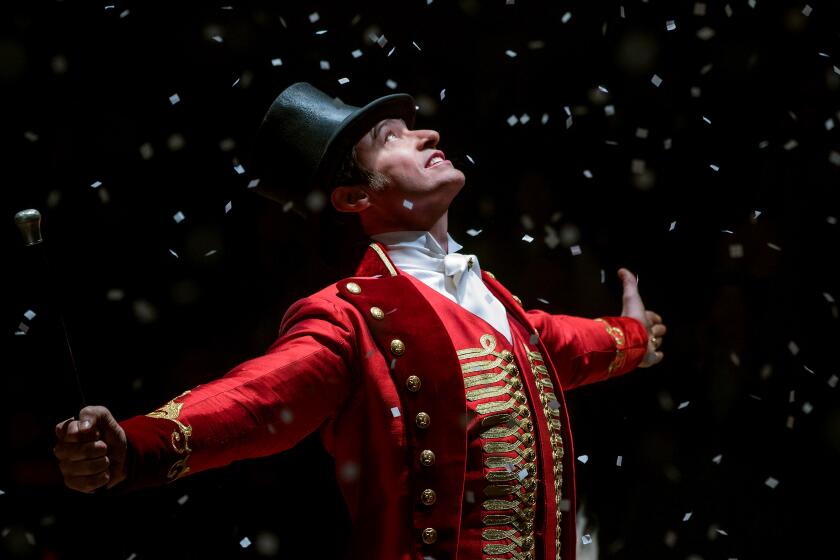RIGHT FOR THE PART
When casting director John Papsidera commenced work on Christopher Nolan’s “The Dark Knight” in 2006, he knew that filling the role of the Joker would be among his biggest challenges. After all, no less an actor than Jack Nicholson had played the part in Tim Burton’s 1989 “Batman,” an indelible portrayal that could scare away big-name and up-and-coming thespians alike. But considering Nolan’s distinctive vision for the role, it quickly became clear to Papsidera that he was not looking for an actor who could reinterpret Nicholson.
“When we started to discuss the character, it was obvious that Chris saw it [different from] other versions of what we had seen with the Joker,” Papsidera says. “There was a much darker, anarchist bent to him.”
He found that perfect anarchistic bent in the late Australian actor Heath Ledger, whose chilling performance has left insiders buzzing about an Oscar nomination since the first dailies were shot.
Charged with finding actors who can embody a director’s concept for characters, casting directors contribute significantly -- though behind the scenes -- to the look and feel of a film. But regardless of what imprint they leave, the academy doesn’t have a category to recognize them for their work, a fact that most casting directors don’t really seem to notice.
“I have my little world that I live and work in, and I don’t really think about much else,” says Laray Mayfield, who was casting director on David Fincher’s “The Curious Case of Benjamin Button.” “When you get the opportunity to work with a director like David often, I don’t think about whether somebody’s going to give me an Academy Award or not.”
Mayfield, a longtime collaborator with Fincher, chalks up the lack of a casting category to history. “There were certainly some talented casting directors from early on in the film business, but I think so much of it came from when they had contract players who were signed to studios,” Mayfield says. “A lot of casting may have been put in place before [the film] actually got into the hands of casting directors. And I think there are still films that are like that.”
Indeed, the level of control a casting director has on a project these days varies from film to film. Some do start out with stars attached to ensure financing and, more often than not, the director will be involved in all the major casting decisions on any big-budget film.
For “Benjamin Button,” Mayfield says she thought the script was beautiful and knew her challenge would be to cast actors who could play various ages through large time spans in the epic tale. The resulting cast -- Brad Pitt, Cate Blanchett and Tilda Swinton, among others -- were faced with bringing emotion to a film loaded with makeup and visual effects. “The makeup and the technology are profound -- but so is Brad Pitt,” Mayfield says. “His performance is the through line and the humanity of the spectrum of that character. He carries the role from start to finish.”
The awe that Mayfield expresses for Pitt’s performance is echoed by “Milk” casting director Francine Maisler, whose choice of Sean Penn to play San Francisco politician Harvey Milk yielded another buzz-worthy performance. “To be honest, the casting of Sean Penn is a no-brainer,” Maisler says. “I’m extremely fortunate to have worked with Penn as a director, so I know the depth of his talent behind and in front of the camera.”
Despite her previous experience with Penn, Maisler says that casting a role based on a real-life figure can be difficult. “It presents some challenges because the figure is well known to large numbers of people,” she explains. “While one never attempts to imitate a historical figure, as a casting director you try to capture the essence of the person.”
Although Maisler says she never considers the awards potential of a role while she’s casting, she wouldn’t mind seeing the academy begin to honor those working hard to find the right actors for these roles. “Casting directors deserve more recognition,” she says.
Working behind the scenes is by definition working out of the spotlight, but Papsidera explains that the job of the casting director is about collaboration and interpretation, neither of which is easy to pin down and reward. “A lot of what I do is interpreting the material -- matching souls to what I read on a piece of paper,” he says. “It is a collaborative art, and you have to be really good at getting everybody on the same page.”
When the result is a good movie, that is reward in and of itself, Mayfield says. “That people relate to what it is that we do is so rewarding to me. It’s a cool gig,” she says.
--
More to Read
Only good movies
Get the Indie Focus newsletter, Mark Olsen's weekly guide to the world of cinema.
You may occasionally receive promotional content from the Los Angeles Times.










